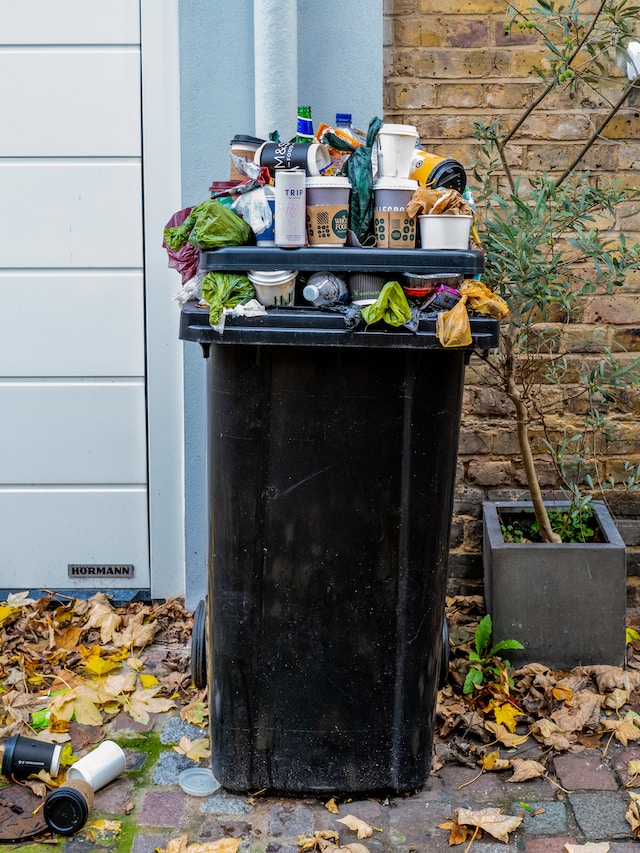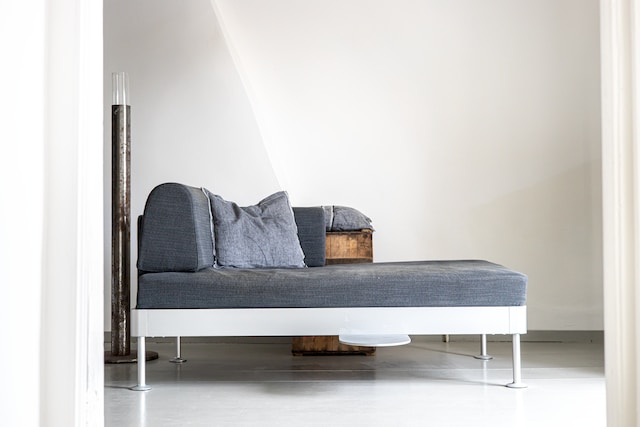In an era dominated by consumer culture and disposability, a growing movement towards sustainable living has emerged. This paradigm shift reflects our growing awareness of the environmental impact of our choices and the pressing need to address climate change. This paradigm shift emphasizes our desire to foster a better, more sustainable future. At the forefront of this movement lies the concept of zero-waste living spaces, where minimalism and sustainability converge to create harmonious, eco-friendly environments.
However, minimalism alone is not enough. As conscious individuals, we must also consider the environmental consequences of the products we consume and the waste we generate. Enter sustainability – the foundation upon which zero-waste living spaces are built. By adopting sustainable practices, we can reduce our ecological footprint, promote responsible consumption, and protect our planet for future generations.

Zero-waste living spaces embody these principles by incorporating sustainable design elements and embracing eco-friendly lifestyles. From the moment one steps inside, these spaces exude a sense of purposeful simplicity, with thoughtfully chosen furnishings and decor that are both aesthetically pleasing and environmentally conscious. Natural and recycled materials take center stage, replacing resource-intensive alternatives and promoting conscious consumption.
Every aspect of zero-waste living spaces is meticulously planned to minimize waste production, from the careful selection of long-lasting, durable items to the incorporation of renewable energy sources. Energy-efficient appliances, water-saving fixtures, and intelligent design choices all contribute to a reduced environmental impact and a lower carbon footprint.
The Essence of Zero-Waste Living
Embracing a zero-waste lifestyle is not merely a trend; it is a philosophy that challenges traditional notions of consumption and waste. Zero-waste living spaces encapsulate this ideology, fostering a mindful and purposeful approach to our homes and the environment.
Mindful Consumption
In the pursuit of a zero-waste living space, the emphasis lies on selecting high-quality items that are built to last. By investing in durable furniture, appliances, and products, we reduce the need for constant replacements and, in turn, minimize waste generation.
Adhering to the minimalist mindset, zero-waste living spaces prioritize necessity over excess. This means embracing a curated approach to belongings, eliminating items that no longer serve a purpose in our lives. By cultivating a space free from unnecessary clutter, we create room for clarity and intentionality.
Sustainable Design
Zero-waste living spaces often embrace sustainable design and the beauty and functionality of natural materials. From reclaimed wood floors to organic cotton textiles, these choices not only lend an organic aesthetic but also reduce the reliance on synthetic and resource-intensive materials.
Reimagining the potential of discarded materials is a hallmark of zero-waste design. By seeking out second-hand or upcycled pieces, we divert waste from landfills and give new life to objects with a history. Repurposing materials not only reduces our ecological footprint but also fosters creativity and individuality in our living spaces.
Waste Reduction

Choosing products with minimal or compostable packaging is an essential aspect of zero-waste living. By supporting brands that prioritize sustainable packaging solutions, we can actively contribute to the reduction of plastic waste and promote a circular economy.
Zero-waste living spaces adopt a comprehensive waste management system that goes beyond the basic recycling bin. By incorporating composting practices, we can transform organic waste into nutrient-rich soil for gardens, closing the loop on food waste and reducing landfill contributions.
Decluttering and Downsizing
Decluttering and downsizing are essential for zero-waste living spaces. By thoughtfully assessing our belongings and letting go of items that no longer serve a purpose, we create space for what truly matters. Here are some strategies to declutter and downsize:
- Evaluate each item in your living space and ask yourself if it brings value or joy to your life. Rid yourself of duplicates or items that no longer serve a purpose.
- Items that are in good condition but no longer needed can be donated or sold to extend their lifecycle and benefit others.
- Before acquiring new items, consider their long-term use and longevity. Seek quality over quantity and aim for multi-functional pieces that serve multiple purposes.
- Extend the decluttering process to your digital life by organizing files, deleting duplicates, and unsubscribing from unnecessary emails or subscriptions.
- Adopt a “one-in, one-out” rule, where for every new item brought into your space, an old one is removed. This helps maintain a clutter-free environment.
Energy Efficiency and Eco-Friendly Systems
Sustainability is not limited to just the materials used in zero-waste living spaces; it extends to the energy consumption and systems that power these spaces as well. By prioritizing energy efficiency and embracing eco-friendly technologies, zero-waste homes can minimize their impact on the environment and contribute to a more sustainable future.
Solar Power: Installing solar panels on the roofs of zero-waste homes allows for the generation of clean, renewable energy. Harnessing the power of the sun reduces reliance on fossil fuels and helps to lower carbon emissions.
Wind Power: In regions with sufficient wind resources, integrating wind turbines into the design of zero-waste homes can further supplement renewable energy generation. These turbines can be installed on the property or nearby locations to take advantage of the wind’s energy-generating potential.

Energy Monitoring and Management: Smart home systems enable the monitoring and control of energy usage throughout the zero-waste living space. By tracking energy consumption patterns and making informed adjustments, homeowners can optimize their energy usage and identify areas where improvements can be made.
Smart Lighting: Energy-efficient LED lights, paired with smart lighting controls, offer an eco-friendly alternative to traditional lighting options. Automated systems that adjust lighting levels according to natural daylight and occupancy can further minimize energy waste.
Passive Design Features: Incorporating passive design principles, such as proper insulation, window shading, and natural ventilation, can help regulate temperature and reduce the need for excessive heating or cooling.
Energy-Efficient HVAC Systems: Investing in energy-efficient heating, ventilation, and air conditioning (HVAC) systems ensures optimal comfort while minimizing energy consumption. High-efficiency models use less energy to heat or cool living spaces, resulting in reduced carbon emissions and lower utility bills.
Rainwater Harvesting: Implementing rainwater harvesting systems can capture and store rainwater for various non-potable uses, such as irrigation, toilet flushing, and laundry. By relying less on treated water, zero-waste homes can conserve precious freshwater resources.
Low-Flow Fixtures: Installing low-flow faucets, showerheads, and toilets significantly reduces water consumption without sacrificing functionality. These fixtures limit water flow while maintaining adequate pressure, enabling sustainable water usage habits.
Furniture with Purpose
When designing zero-waste living spaces, it is crucial to prioritize furniture that serves a meaningful purpose while promoting sustainability. By selecting pieces that are not only aesthetically pleasing but also multifunctional and environmentally conscious, we can create harmonious and purposeful living spaces.
Multifunctional Pieces
Maximizing space and reducing clutter are key elements of zero-waste living. By incorporating furniture that serves multiple purposes, we can make the most of our living spaces. Consider the following examples:
Sustainable Materials
Choosing furniture made from sustainable materials is an essential aspect of zero-waste living. Look for pieces that are crafted from responsibly sourced, renewable, or recycled materials. Here are some options to consider:
- Bamboo Furniture: Bamboo is a fast-growing, renewable resource that can be harvested without causing significant harm to the environment. It is sturdy, durable, and adds a touch of natural beauty to any space.
- Recycled Plastic Furniture: Investing in furniture made from recycled plastics diverts waste from landfills and promotes the concept of a circular economy. Look for brands that use recycled plastic materials to create stylish and functional pieces for your zero-waste living space.
- The Sleeper Sofa: A sofa bed not only provides comfortable seating but also transforms into a guest bed when needed, eliminating the need for a separate guest room and optimizing space.
- Storage Ottomans: These versatile pieces serve as seating, footrests, and storage solutions. They can hold blankets, pillows, or even serve as a hidden compartment for items that need to be tucked away.

Upcycled and Second-Hand Finds
Embracing the concept of upcycling and seeking out second-hand furniture not only reduces waste but also adds unique character and charm to your zero-waste living space. Consider the following options:
- Vintage Furniture: Scour thrift stores, antique markets, and online platforms for vintage furniture pieces that can be restored and repurposed. These timeless pieces often have high-quality craftsmanship and can become statement pieces in your zero-waste home.
- DIY Projects: Put your creativity to work by upcycling old furniture or repurposing materials into new pieces. From transforming old pallets into shelving units to decoupaging vintage fabric onto worn-out chairs, the possibilities for DIY projects are endless.
Smart Storage Solutions
In a zero-waste living space, efficient storage solutions are key to maintaining a clutter-free environment. By utilizing smart storage techniques, you can not only optimize space but also keep your belongings organized and easily accessible. From innovative furniture designs to creative organizing methods, here are some smart storage solutions that will enhance your zero-waste lifestyle.
Vertical Storage
When it comes to optimizing space, thinking vertically is essential. By utilizing vertical storage solutions, you can make the most of your walls and free up valuable floor space. Here are some vertical storage ideas:
- Wall-Mounted Shelves: Install floating shelves on your walls to display decorative items or store frequently used items. This not only adds visual interest but also keeps your belongings within easy reach.
- Hanging Racks and Hooks: Hang racks and hooks on your walls or the back of doors to store coats, bags, and hats. This eliminates the need for bulky coat stands or cluttered entryway spaces.
- Overhead Storage: Install overhead storage units in your garage or utility room to store seasonal items, luggage, or rarely used belongings. This keeps them out of the way while maximizing the available space.

Creative Organizers
In a zero-waste living space, it’s crucial to have effective organizing solutions that keep your belongings easily accessible and neatly arranged. Consider the following creative organizing tools:
- Drawer Dividers: Use drawer dividers to create separate compartments for different types of items, such as socks, underwear, or accessories. This prevents items from getting mixed up and makes finding what you need a breeze.
- Labeling Systems: Labeling containers, bins, and boxes can help you quickly locate specific items and maintain an organized space. Opt for reusable, eco-friendly labels made from chalkboard or write-on materials.
- Collapsible Storage Bins: Invest in collapsible storage bins that can be easily folded and stored when not in use. These can be used to store seasonal clothing, bedding, or other items that are infrequently used.
By embracing minimalism and sustainability, you can create a home that reflects your values and promotes a greener, more conscious way of living. Let your space tell the story of your commitment to a better future, one that embraces simplicity, purpose, and environmental stewardship.
